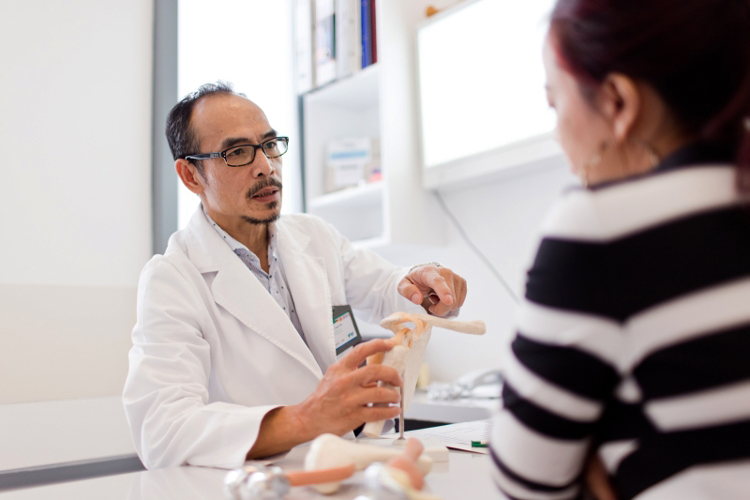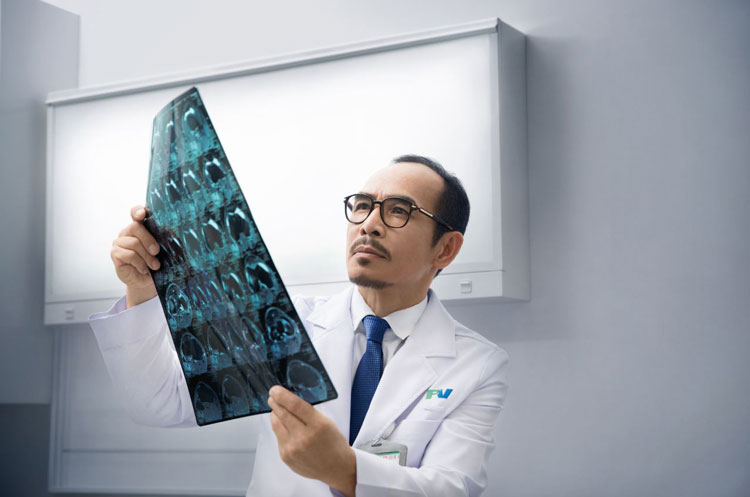Le Trong Phat, MD, PhD, Head of Orthopaedics at FV Hospital, shares that even patients approaching one hundred years old can confidently have their joints replaced with an artificial one to improve their quality of life.

No age limit in joint replacement surgery
An 85-year-old woman needed a hip replacement to end her pain
Dr Le Trong Phat has performed more than 3,000 hip replacement surgeries since he started working as an orthopaedic surgeon. His youngest hip replacement patient was 19 years old. The oldest: a 99-year-old woman, who underwent surgery four years ago and currently enjoying a new lease on life at her home city of Can Tho. After her positive experience at FV, this patient also visits the doctor more regularly. In recent years, more and more elderly patients have visited FV Hospital for hip replacement surgery. Two weeks ago, Dr Phat operated on an 85-year-old female patient, who lives in Nha Be district, Ho Chi Minh City. After a successful procedure, she was discharged from the hospital in good health and is already able to walk slowly and comfortably, unaided.
According to Dr Phat, except for cases when the patient has fallen and broken their femur and need an immediate hip replacement to ensure they can walk again, many cases requiring joint replacement are when the patient’s hip has become stiff and they find it extremely difficult to walk. Another situation is when severe hip pain doesn’t improve with medication and interferes with the patient’s ability to work, sleep, or daily activities. If an elderly patient falls and breaks their femur, or suffers from severe hip arthritis without a hip replacement, they will have to spend more time sitting and lying down, which can cause inflammation, urinary tract infections, and skin sores. Their quality of life will be negatively impacted, as it that of their caregivers.
Artificial joint replacement for the elderly: uncomplicated, with a high rate of success
Mr L.T., 52 years old, living in Kien Giang, suffered from stiff, painful hips and had difficulty walking. His health worsened until his pain became unbearable when he tried to stand up and sit down. Mr T. went to FV Hospital and was diagnosed with severe hip osteoarthritis and prescribed a hip replacement by his doctor. After one hour of surgery and a day of rest and recovery, Mr T. was able to stand up and take his first steps.

Dr Le Trong Phat operates at FV Hospital
Dr Phat says that hip replacements, compared to many other surgeries, are not complicated. The surgery takes just over one hour and doesn’t require general anaesthesia, but local spinal anaesthesia, which is very safe for the elderly as it doesn’t affect their respiratory organs and the patient recovers quickly after surgery. Twenty-four hours after surgery, if they are not experiencing dizziness, the patient can start walking slowly.
Hip replacement patients need to be assessed by an anaesthesiologist to ensure that they are healthy enough to undergo surgery. If it’s possible to perform a one-hour operation with minimal blood loss, the hip replacement surgery will be performed, regardless of the patient’s age. Hip replacement helps to restore a patient’s independence by improving their ability to move, reduces their pain and can prevent them from becoming bedridden. In the case of a femoral neck fracture, a partial or complete hip replacement will help the patient to walk immediately after surgery without needing to wait for the wound to heal.

Dr Phat has performed many successful hip replacements for patients who are nearly 100 years old
The life expectancy of artificial hip joints has been greatly improved and a new joint can last 15 to 20 years, depending on the weight and lifestyle of the patient. Rehabilitation and general health of the patient following surgery is also influenced by the technique of hip replacement and postoperative care. Currently, FV Hospital applies the most sophisticated hip replacement technique via the SuperPath method combined with a non-incisional drainage technique, which enables patients to start walking quickly. This method ensures optimal rehabilitation and patients is given physical therapy while still in bed.
SuperPath is an international-standard, minimally invasive artificial joint replacement method. Via this technique, the surgeon makes a small incision which ensures minimal blood loss. It is particularly important to limit the dissection of deep tissues and to avoid invasion of muscles and tendons to ensure a high degree of safety. The patient can walk unaided with a fairly normal gait within a day of surgery.
Something key to successful artificial joint replacement surgeries is to limit wound infection. If an infection takes hold, the patient will experience pain and will need to stay in the hospital longer. In some cases, they may need to have another operation to remove problematic tissue around the artificial joint. For many years, thanks to the strict infection prevention and control procedures, FV’s Orthopaedics Department has maintained a rate of wound infection of less than 0.1 per cent. Dr Le Trong Phat notes that just as in dentistry, when treating purulent root infections in people with artificial joints it is recommended to take prophylactic antibiotics for a period prior to surgery as an infection that spreads in the blood can infect the artificial joint.
For more detailed advice, patients can contact: (028)54113333.



